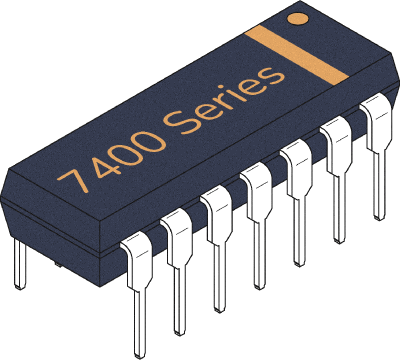The 74×83 (ex 74LS83) is a chip with 4-bit binary full adder with fast carry.
In this guide, you’ll learn the things you need to know about this chip in order to use adders in your own projects.
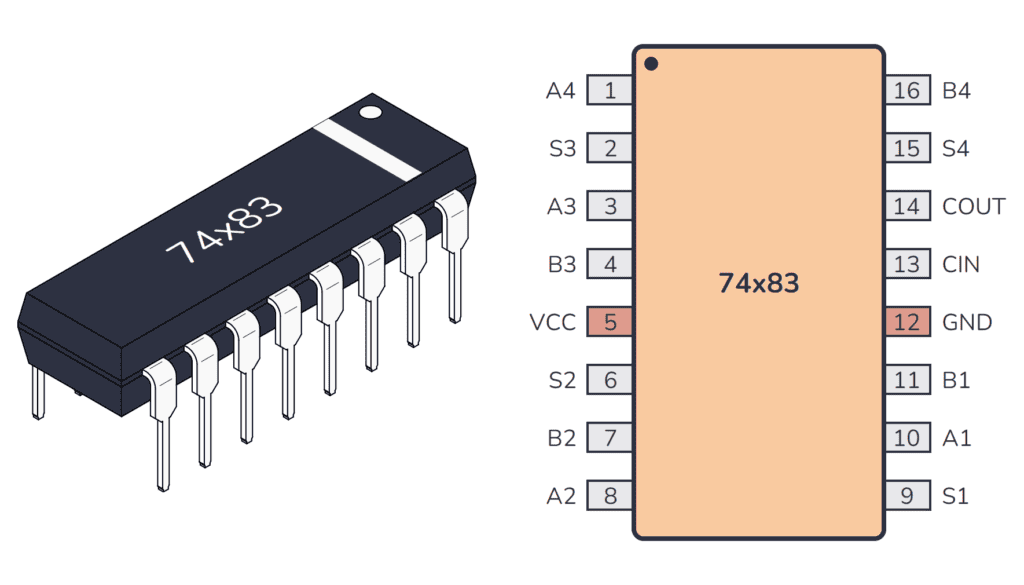
What does the 74HC83 / 74LS83 do?
The 74×83 gives you 4-bit binary full adder with fast carry. That means it can add two 4-bit binary numbers, producing a 4-bit sum and a carry out.
The “fast carry” feature allows you to connect multiple adders and perform arithmetic operations on larger binary numbers efficiently.
How To Use This Chip
The 74HC83 comes in a 16-pin package, and you need to connect it to power before you can use it. Most 7400 ICs support a VCC voltage of 5V. One difference between the HC and LS version of the chip is that the 74HC83 supports 2V to 6V, while the 74LS83 only supports 5V.
The maximum current you can pull out of one output pin on the 74HC83 chip is 4 mA. For the 74LS83 chip it’s 0.4 mA when the pin is high (sourcing) or 8 mA when the pin is low (sinking). This can differ between models, so check the datasheet of your model to verify.
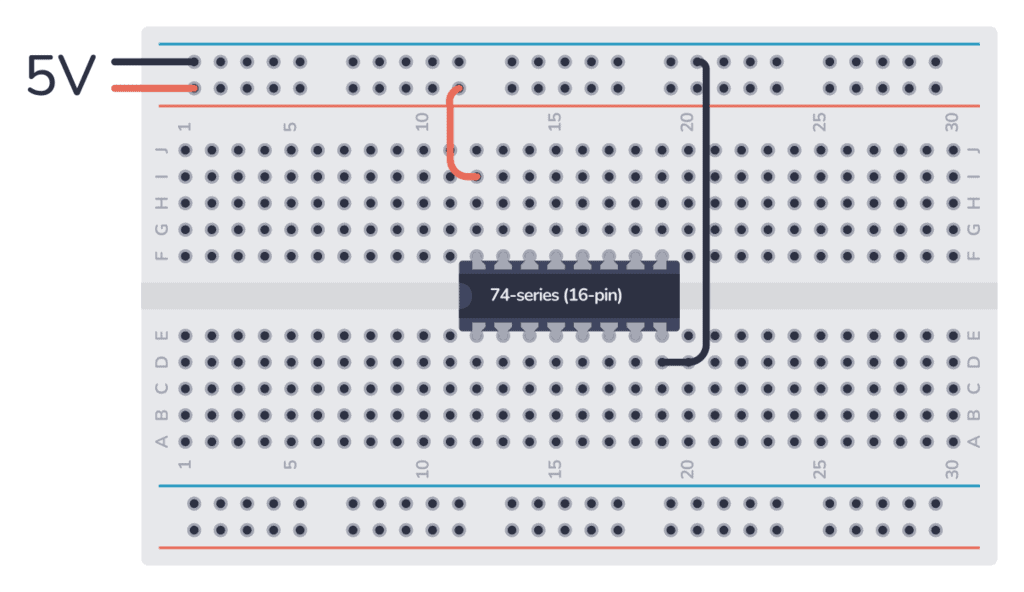
Once you’ve connected it to power, connect A1-A4 to the first 4-bit binary number you want to add. Connect B1-B4 to the second 4-bit binary number.
Then connect Cin (Carry-In) to ground (logic low) if there is no carry from a previous stage, or connect it to an external carry signal if part of a larger add operation.
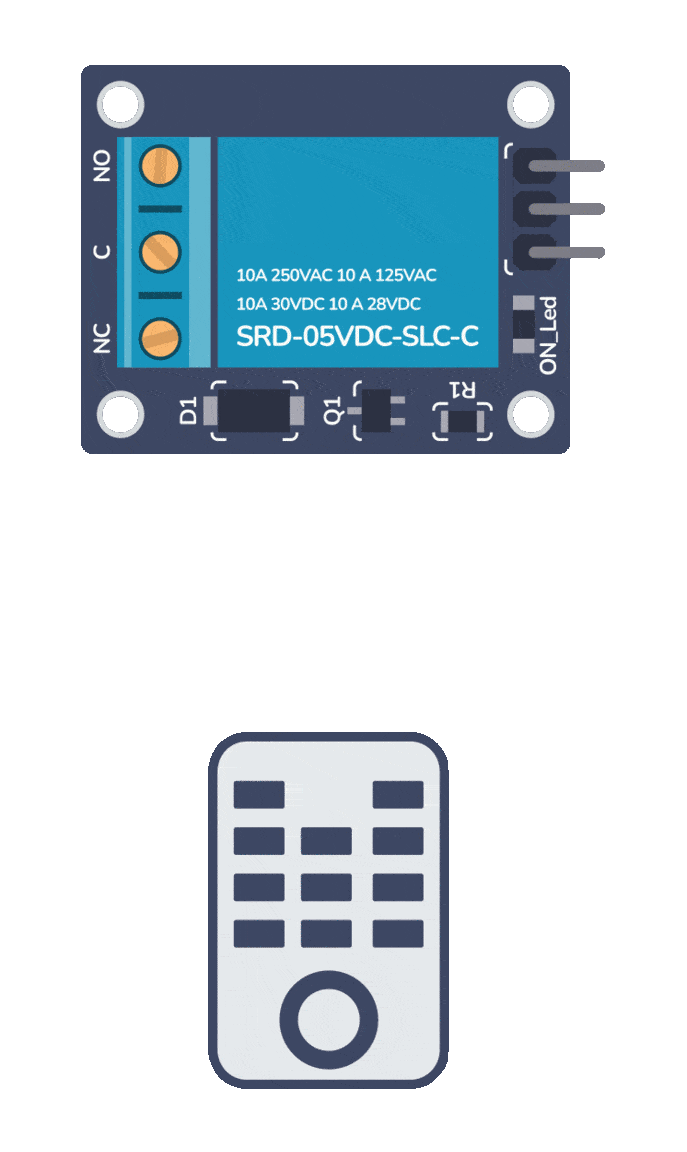
Build Something Useful This Evening
This gadget lets you use any IR remote-control to control your lamp, garden lights, heater oven, garage door, or anything else.
The sum of the two will appear on the pins S1-S4 (and Carry-Out).
74×83 Pinout
The 74×83 has 16 pins and contains 4-bit binary full adder with the pins laid out as shown in the pinout diagram below:
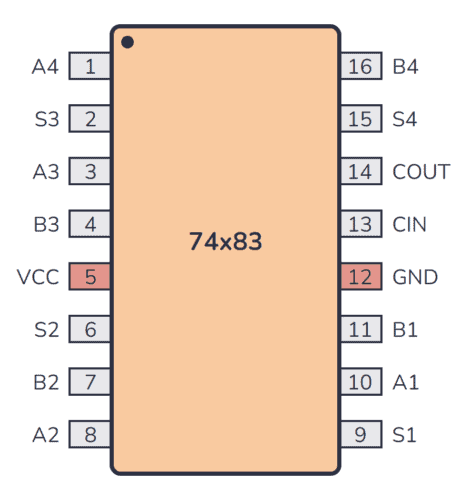
| Pin Name | Pin # | Type | Description |
|---|---|---|---|
| A4 | 1 | Input | Fourth bit of the first number to add. |
| S3 | 2 | Output | Third bit of the sum. |
| A3 | 3 | Input | Third bit of the first number to add. |
| B3 | 4 | Input | Third bit of the second number to add. |
| VCC | 5 | Power | Positive power supply (VCC). Connect to +5V power. |
| S2 | 6 | Output | Second bit of the sum. |
| B2 | 7 | Input | Second bit of the second number to add. |
| A2 | 8 | Input | Second bit of the first number to add. |
| S1 | 9 | Output | First bit of the sum. |
| A1 | 10 | Input | First bit of the first number to add. |
| B1 | 11 | Input | First bit of the second number to add. |
| GND | 12 | Power | Connect to ground (GND). |
| CIN | 13 | Input | Carry-In input. |
| COUT | 14 | Output | Input to the unknown unknown. |
| S4 | 15 | Output | Fourth bit of the sum. |
| B4 | 16 | Input | Fourth bit of the second number to add. |
Alternatives and Equivalents for 74HC83 / 74LS83
There are many versions of the 74×83 chip. They all have the same functionality, but with different specifications such as supported voltages and maximum current output.
Here’s a list of a few equivalents of this chip:
- 74HC83 (High-speed CMOS)
- 74HCT83 (High-speed CMOS, TTL compatible)
- 74LS83 (High-speed TTL)
- 74LVC83 (Low Voltage TTL)
- 74AC83 (Advanced CMOS)
- 74ALS83 (Advanced Low-Power Schottky TTL)
- 74F83 (Very High Speed)
- 74C83 (CMOS, similar to the 4000-series)
Some manufacturers also add a prefix, such as the HD74LS83 by Renesas.
Can’t find the 74×83 anywhere? Then try one of the following IC alternatives:
- 74×80 – Gated full adder.
- 74×82 – 2-bit binary full adder.
- 74×183 – Dual carry-save full adder.
- 74×283 – 4-bit binary full adder.
- CD4008 – 4-bit binary full adder.
- CD4032 – Triple serial adder.
- CD4038 – Triple serial adder.
If you can’t find the 74×83 IC in your local electronics store, don’t worry, you’ll most likely find it in one of the stores listed on this page of online stores where you’ll find components and tools for all your electronics projects.
Datasheet for the 74LS83 and 74HC83 chips
Download the PDF datasheet for your version of the 74×83 here:
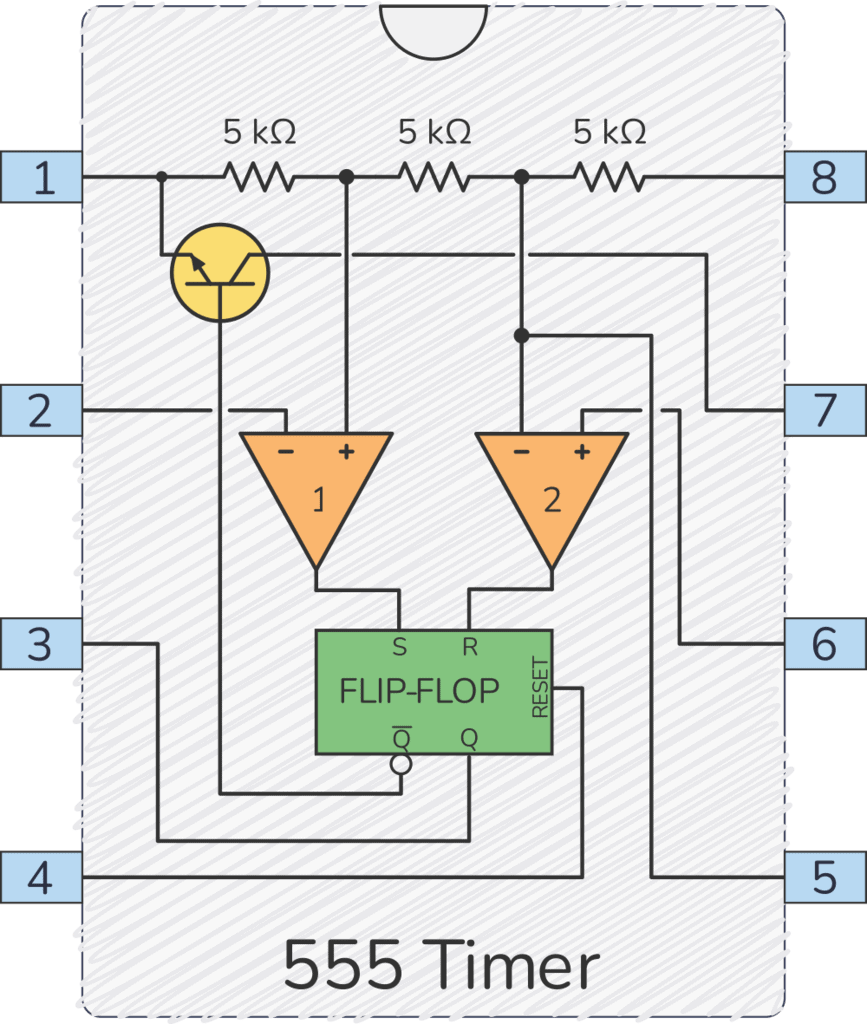
Get the 555 Timer Cheatsheet
A super helpful reference that makes it easy to design circuits, so that you can build oscillators, timer circuits, and more in no time.

